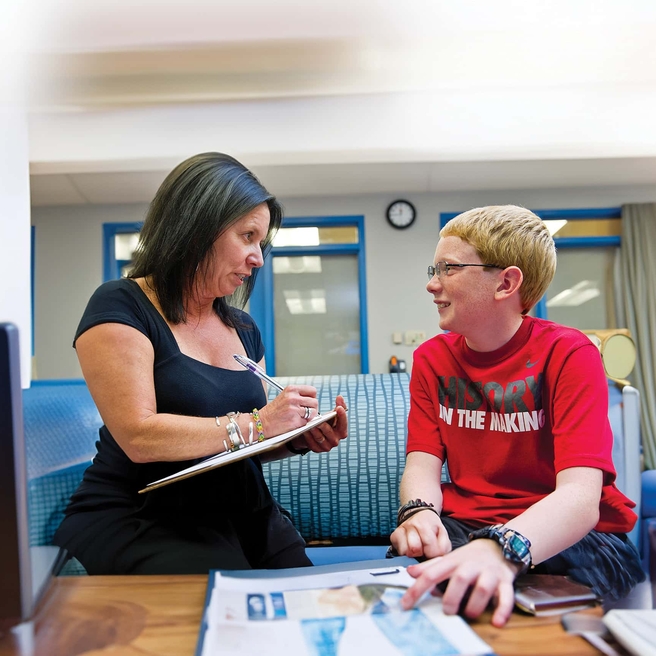What are cerebral palsy spinal disorders?
Spinal disorders in cerebral palsy and neuromuscular disorders are exceedingly common. It is estimated that up to 80 percent of children with full body involvement in cerebral palsy will develop a spinal deformity.
Spinal deformity results from muscle imbalance caused by spastic, tight muscles. These curves tend not to respond to braces, and will continue to worsen.
If the deformity becomes severe, the child can lose the ability to sit. As the curve worsens, skin problems over the buttocks may develop, and heart and lung function may deteriorate.
Treatments
Orthopedic surgeons at Children's Hospital of Philadelphia (CHOP) use surgery to correct severe scoliosis associated with cerebral palsy.
Spinal fusion may be necessary when scoliosis becomes severe and the spine loses its flexibility. The surgery involves correcting the curve in the spine as much as possible using metal rods and wires, and preparing the bones so proper fusion will occur.
CT-guided navigation is used to minimize risk of hardware placement during these surgeries, as demonstrated by clinical research studies performed at CHOP.
A variety of safety initiatives including local antibiotic powder administration, wound care advances and improvements in anesthesia care have made CHOP’s neuromuscular spinal care the most advanced in the region.
Caregivers often notice a marked improvement in sitting balance after the surgery. Improvements in respiratory function and weight gain have also been noted.
More about surgery for cerebral palsy spinal disorders
Learn more about spinal fusion for children with neurologic disorders, including preparing for and recovering from surgery.
Resources to help
Cerebral palsy spinal disorders Resources
Cerebral Palsy Program Resources
We have gathered resources to give you information and help you find answers to your questions. We hope this makes your family’s life a bit easier.
Reviewed by Keith D. Baldwin, MD, MPH, MSPT
